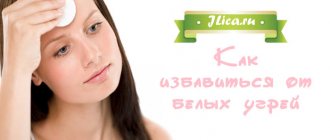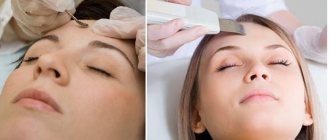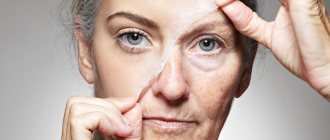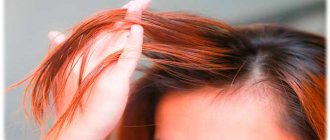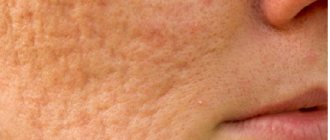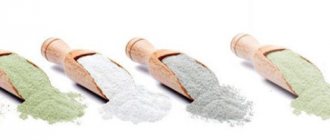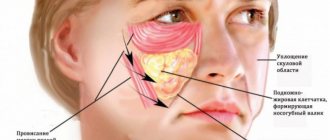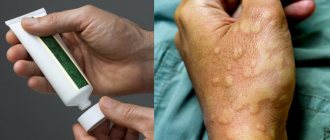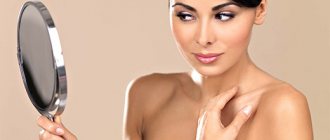Have you tried all the ways to eliminate skin rashes, but still no results? It's time to move on to radical measures, for example, laser acne removal. This modern technique is one of the most effective; it not only helps to achieve pronounced and long-lasting positive results, but also has almost no side effects, does not cause discomfort and eliminates the very cause of the manifestation of formations. What are its advantages and what are its distinctive characteristics?
Causes of acne
It is imperative to understand this, since the appearance of acne is often facilitated by the person himself. Here is a list of the most common factors that worsen skin condition and cause inflammatory processes:
- insufficient or improper skin care, including incorrectly selected cosmetics;
- frequent touching of the skin with dirty hands;
- unhealthy diet (for example, abuse of coffee, chocolate, fatty foods, etc.);
- hormonal imbalance in the body (this often occurs during adolescence);
- increased sweating;
- taking certain medications (corticosteroids, contraceptives);
- hereditary predisposition;
- frequently occurring stressful situations.
The appearance of acne is usually accompanied by seborrhea, characterized by increased sebum production. The consequence is that the skin becomes quite oily, the pores expand and open to dust and dirt.
How does laser acne treatment work?
Laser acne removal is an effective method of combating acne for patients of any age and gender. The result of hardware treatment is the elimination of signs of inflammation, restoration of skin health and tone. To understand how laser acne treatment works, you need to understand the essence of the procedure.
Acne is a complex pathology in which the activity of the sebaceous glands and the functioning of the hair follicles are disrupted. The predisposition to the appearance of acne and blackheads is due to two factors:
- excess production of hormones that make up the androgen group;
- excessive sensitivity of the sebaceous glands to hormonal imbalance.
The following external causes can provoke rashes on the face and body:
- An unbalanced diet with a predominance of dairy products, fatty, fried, spicy foods in the menu.
- The effect of stress.
- Incorrectly selected cosmetics that irritate the skin or clog its pores.
When external and internal factors for the development of acne act simultaneously, pores become clogged, which leads to the active proliferation of Propionibacterium Acnes bacteria, which under normal conditions do not cause harm to the skin. The body reacts to such changes with an inflammatory process with the formation of purulent sacs inside the pores that require removal.
Laser acne removal is preferable to other options for getting rid of comedones due to the painlessness of the method, its safety, and high efficiency. Laser therapy is accompanied by delicate polishing of the skin; scars and cicatrices do not remain after such treatment, since the healing beam does not come into direct contact with the skin. The total duration of exposure to the device usually does not exceed half an hour.
The principle of using a laser to cleanse the skin of acne, blemishes, and post-acne marks is as follows:
- The laser beam is directed to the area requiring cleaning.
- When removing acne with a laser, the beam penetrates deep into the tissue.
- The result of the laser “working” under the skin is disinfection, elimination of pathogenic bacteria, drying of inflamed areas to prevent re-formation of acne.
- The peculiarity of laser acne removal is not only a reduction in the number of pimples, but also the activation of local immunity and metabolic processes within the dermis, which leads to active tissue restoration from the inside through the synthesis of collagen and elastin fibers.
Laser removal of acne allows not only to qualitatively treat inflamed skin, but also helps to get rid of sagging tissue, which is especially noticeable on the face - visible cosmetic defects are leveled, the skin again acquires elasticity and smoothness. The first laser session is aimed at eliminating rashes, subsequent visits are necessary to eliminate the unpleasant consequences of acne - relief, pigmentation disorders.
In order for the cleaning to be effective and without negative consequences, at the stage of preparation for the procedure it is enough to follow simple recommendations:
- At least 4 weeks before the planned laser session, the skin begins to be protected from direct contact with ultraviolet radiation, leaving those areas affected by acne closed.
- To exclude complications after the procedure or the lack of effect of the laser, warn the cosmetologist in advance about taking drugs from the sulfonamides, salicylamides, drugs based on chlorpromazine, bithionol, thiazide, hexachlorophene, systemic antifungal agents - they contain photosensitizing components that distort the picture of treatment.
Preparation for laser removal of post-acne or fresh manifestations of acne, blackheads in adolescents and adults in a cosmetology office consists of the following points:
- The doctor must conduct a preliminary conversation with the patient to collect anamnesis, paying attention to information about the duration of acne and its course. An assessment is also given to the individual condition of the skin at the time of examination.
- A comprehensive plan for acne treatment is drawn up with a schedule of the IPL course, selection of medications for accompanying treatment (Acnecutane or other drugs).
- Before the procedure using the Fotona neodymium device, the patient wears glasses that protect the eyes from the destructive effects of the laser beam.
Taking medications (both capsules for oral administration and ampoules for injection can be used) complements laser removal of acne if the cause of the disorder is hormonal dysfunction, malfunction of the digestive system, or incorrect drug therapy for internal pathology. In such situations, a laser is considered as a secondary aid for the correction of cosmetic defects - the result of long-term damage to the skin not only of the face, but also of the chest and back due to acne and comedones.
Removing comedones with laser does not happen in just one session. The therapy program is prescribed for a specific patient based on the severity of the disease. The procedure is carried out with a break of several days. The standard treatment regimen involves no more than 2-3 sessions per week.
Removing acne with a laser does not hurt, but the skin's reaction to external irritants can be noticeable if there is large-scale acne. Swelling of the tissues, their redness, and a local feeling of heat cannot be ruled out. Such phenomena pass quickly (within two days) and are considered normal.
Sometimes bubbles or crusts form at the site of inflammation. You cannot get rid of them; the healing process takes place naturally.
After laser peeling, the skin is especially sensitive to the influence of external factors. Care consists of observing several points:
- Laser-treated areas are protected from direct sunlight and solarium ultraviolet radiation for one and a half months. If it is not possible to completely cover the treated areas, creams with an SPF 50 filter are used for protection.
- During the first 24 hours after the procedure, contact of the treated skin with any cosmetic products is not allowed.
- 24 hours after removing blackheads with a laser, polishing scars or cauterizing acne, you can proceed to washing and cleansing the skin using only soft formulations without alcohol components.
- Effective care also implies additional hydration, even if you have an oily skin type.
In the future, cosmetologists advise removing from the arsenal of home remedies cosmetics that are not intended for skin prone to acne and comedones.
The effectiveness of laser therapy is quite high, it is described by the following indicators:
- After 7-10 days from the first session, the number of visible rashes decreases by 2-3 times compared to the initial skin condition.
- After a full course of procedures, the dermis is cleansed by more than 80%, pores are reduced, and sebaceous shine is eliminated.
Over the course of several weeks, aesthetic problems caused by acne become less noticeable to others due to the evening out of the complexion, returning it to a pink tint, increasing the tone of the tissues, and their smoothness.
A simple, painless technique allows you to not only effectively remove acne with a laser, but also prevent relapse. The reappearance of rashes is excluded for the next 5 years due to deep tissue treatment and strengthening of local immunity.
Despite the high price, more and more patients suffering from cosmetic pathologies are seeking to remove acne marks with laser. But there are a number of contraindications for which the use of laser technology is impossible:
- period of pregnancy, lactation;
- development of the oncological process;
- risk of epileptic seizures;
- the presence of signs of atopic dermatitis in the acute phase;
- acute course of psoriasis;
- the need to combine laser therapy and medications based on photosensitizing components.
Contraindications also include a fresh tan, which explains the requirement to avoid contact with direct sunlight and artificial ultraviolet radiation at the stage of preparation for manipulation.
Laser acne removal is often accompanied by redness and swelling of the skin. Such phenomena are not considered a complication of the procedure if they disappear after a maximum of 4 days. On the recommendation of a doctor, topically applied medicinal formulations can be prescribed to speed up tissue restoration.
Experts in the treatment of acne clearly agree that laser for such skin lesions is considered as the safest and most effective means of therapy with a long-term therapeutic effect. The high cost of the procedure is justified by the rapid visual changes, the absence of discomfort during the session, and the ability to return to everyday activities immediately after the procedure with minimal restrictions.
Clients of beauty salons confirm the adequate ratio of the “price/performance” criteria, note the complex effect on the skin, which not only becomes healthier, but also noticeably tightens, becomes smooth, elastic, and fresh.
Laser acne removal has different prices - it depends on the status of the salon and the prevalence of acne. You can count on the minimum price if there are no pronounced external or subcutaneous acne, and the problem is the appearance of a large number of blackheads on one of the areas of the face - the nose, forehead, chin area.
Did you like the article? Share with your friends!
When to start treatment
This is an important point, since the appearance of acne in adolescence is considered by many to be the norm, and a visit to a cosmetologist in this case is not necessary. The explanation is simple: everything will go away with age. In fact, such a belief only aggravates the problem, since over time, stagnation of sebum occurs in the pilosebaceous duct, and this is a favorable environment for the occurrence of infection.
Therefore, you should consult a doctor as soon as the first black spots and barely noticeable pimples appear on your cheeks, chin, and nose area. This will stop the inflammatory process and prevent it from becoming acute and chronic.
Is the procedure carried out at home?
It is not advisable to resort to laser cleaning at home. The procedure requires special equipment that is not intended for private use. In addition, it is highly not recommended to trust charlatans and carry out cleaning at home, which is allegedly done at 2 times cheaper. After such a session, you can face sad consequences. It is strongly recommended not to apply for the procedure to dubious institutions. It’s better to trust the reviews of friends and not buy into “tempting” offers.
To get a good result, it is important to carry out the procedure only in a beauty salon or aesthetic medicine clinic, where the likelihood of getting a burn is minimal.
Consultation with a doctor
Acne removal is often a complex procedure and involves various methods of treating the skin in combination with medication therapy. The purpose of the first is to rid a person of unpleasant formations on the skin and cleanse it. Therapy involves fighting the root cause of the rash.
To select adequate treatment, the doctor conducts an examination of the patient, usually including:
- examination of the integument to determine the nature and location of acne;
- sebometry to find out how much sebum is produced;
- donating blood for hormones;
- pH-metry – helps determine which care and decorative cosmetics are preferable to choose;
- scraping - reveals the presence of parasitic mites.
It is illogical to refuse such examinations, since it will be possible to completely get rid of acne, which is quite possible, only if it is possible to get rid of the factors that contribute to their appearance.
What to Expect During and After Acne Surgery
Laser resurfacing, like other types of acne surgery, is performed by a plastic surgeon or dermatologist. It is an outpatient procedure and after it is completed, you will not have to stay in the clinic overnight.
Acne surgery takes 30 to 45 minutes to treat only certain parts of the face. Full treatment takes up to two hours.
After your laser treatment, your doctor will bandage the treated areas, and after 24 hours, you will need to clean the treated areas four to five times a day and then apply a soothing ointment that your doctor will prescribe to prevent scarring.
Swelling after laser skin resurfacing is a completely normal part of acne treatment. Your doctor may prescribe steroids to control swelling around the eyes. Sleeping on an extra second pillow at night can also help relieve swelling in the face.
Removing acne from skin
Modern cosmetology offers many ways to remove acne, allowing you to forget about the problem forever. As for skin cleansing, here, along with traditional mechanical action, hardware and injection methods are increasingly being used, which make it possible to simultaneously solve other problems:
- increase skin tone and turgor;
- get rid of small wrinkles and folds, age spots;
- saturate the skin with a complex of beneficial vitamins and minerals, giving it a radiant appearance;
- start the regeneration process in the epidermis.
Thanks to this, the skin will not only be cleared of acne, but will also become younger and more elastic. The acne removal procedure itself, regardless of the chosen method, includes the following steps:
- skin cleansing and disinfection;
- anesthesia - it can be carried out in the form of injections or applications, the main thing is that the patient is not allergic to the components of the anesthetic;
- treatment of affected areas;
- applying a soothing, anti-inflammatory cream.
Cleansing the face
Next, for several days, you will need to lubricate the skin with a product prescribed by the doctor.
Application of laser beam
Allows you to easily get rid of blackheads and pimples. Does not cause discomfort or severe pain.
The doctor acts on the inflamed skin locally using a thin tip - a source of a laser beam. The effect of the procedure is noted as follows:
- antibacterial treatment of the epidermis occurs;
- pores are cleaned;
- the development of the inflammatory process is suspended.
The result is that after several procedures, the skin is completely cleared of acne and takes on a healthy appearance.
Chemical peeling
This method is often used at home, but it can burn the skin and add scarring to acne. In addition, chemical peeling is contraindicated in cases where the epidermis is severely inflamed and has multiple purulent formations. Therefore, it is recommended that this procedure be carried out by a doctor so as not to cause even more harm to the inflamed skin.
Chemical peeling
Peeling can be superficial, medium and deep. Its essence is that an acidic substance is applied to the skin, which helps remove the stratum corneum. For small rashes, superficial peeling may be sufficient; in more serious situations, medium peeling may be sufficient. The type of peeling determines how long it will take to recover: in the first case, it is 3-5 days, in the second, up to two weeks.
Types of acne removal surgeries
Here are several cosmetic and surgical operations that we can use to remove acne, as well as scars, cicatrices and post-acne:
Z-plasty: During the operation, the surgeon makes a Z-shaped incision, which can release the tension and heal the contents of a large pimple.
W - plasty: a method of cutting out an old scar, also in rarer cases used for acne, which creates multiple angles and thereby removes the effect of the consequences of a large number of pimples that were previously on the skin.
Dermabrasion: A method of resurfacing the top layer of skin that can smooth out the surface of the skin from acne and scars to a smoother surface with no consequences and no new manifestations of acne with proper prevention of the disease.
Laser removal of acne and facial scars: a powerful method to smooth out the surface of the skin and simultaneously restructure the collagen in the deeper layers of the skin Laser skin resurfacing removes skin layer by layer with the greatest precision New skin cells that are formed during healing give the skin a tighter, more youthful appearance acne-free surface The procedure can be performed alone or with other facial cosmetic surgeries.
Chemical or acid peeling: a method of removing acne, used either for more serious inflammation of acne, or as acids to open the skin and remove the effects of post-acne. Especially such procedures work with a serious problem of distortion of skin tone and a large number of scars on it. Also, such peels are one of the best methods when working with darker skin types.
Why acne may appear after peeling!
Fat injection: In inflamed areas of the skin, it can relieve the skin of deep pimples and scars and fill the resulting space with fat lipostructure instead of bacteria and fats.
Cryotherapy
The doctor applies liquid nitrogen to the acne using a cotton swab or cryoapplicator, which causes freezing and subsequent death of the affected tissue. At the same time, the skin is disinfected, which accelerates healing and prevents complications. Suitable for removing complex forms of rashes.
With this method, no scars are left; the procedure itself is quick and easy to tolerate (the patient feels a slight burning sensation during the treatment of the skin). Features of rehabilitation:
- on the third day, the skin in the treatment areas begins to peel off;
- after 5-6 days, dead tissue is rejected along with the crust that appears;
- When acne is re-treated (this happens at intervals of 5 to 10 minutes), blisters may appear on the skin, which burst after 10 days, and a crust forms in their place.
Cryotherapy
The course can last up to 10-15 sessions, depending on the complexity of the case.
Mesotherapy
Mesotherapy is the introduction into the subcutaneous layer of a meso-cocktail with antibacterial components, as well as vitamins, minerals, hyaluronic acid, etc., through injections performed with a long thin needle or the attachment of a special device.
The injection depth is no more than 6 mm, additional effects are nourishing the skin, removing toxins, which often become one of the causes of inflammatory processes. Use with caution if acne is caused by hormonal imbalance.
Microdermabrasion
The essence is to exfoliate the upper layer of the epidermis by exposing the affected skin to a nozzle with abrasive (diamond or mineral) microparticles or creating a vacuum by supplying crystals of sodium chlorine, diamond, aluminum oxide, etc. to the skin. As a result, blood circulation, lymphatic drainage, and cell metabolism, cells are enriched with oxygen, which promotes the regeneration of new tissue and the removal of toxins.
In addition, during microdermabrasion, blackheads are removed along with the stratum corneum, the contents of the pores are evacuated, and the pores themselves are narrowed.
What it is
Acne is a lesion of the sebaceous glands, which is characterized by enlarged pores, increased oiliness of the skin, and pinpoint redness, which can later lead to deep scars.
Acne is a skin disease that affects the following processes:
- a thick fatty mass connected with keratinized cells, as a result of which all the outlets of the sebaceous glands are closed;
- follicular hyperkeratosis - this problem leads to a large concentration of dead horn cells in the follicles;
- excess thick fatty mass appears due to secretory changes in the glands.
Removing acne mechanically
Mechanical cleansing comes down to the fact that the doctor removes acne from the skin with his hands using accompanying objects. The procedure is carried out in several stages.
The skin must be steamed and disinfected.
The doctor performs comedone extraction - manually frees the pores from their contents, including deep plugs. Related instruments: Vidal needle - for removing deep subcutaneous and small whiteheads; spoon Uno - to cleanse clogged pores; strainer - effective in removing blackheads; loop - put on the blackheads and helps push the contents out.
At the end of the procedure, the skin is sometimes exposed to a device with high-frequency current to activate regeneration processes.
This method is quite effective, but quite painful. Indicated for oily skin with many blackheads, large acne, and large pores.
Advantages and disadvantages of the method
Advantages of laser treatment of pores compared to other methods:
- deep cleansing - thanks to the laser and gel that contains carbon, even deep impurities are removed;
- exfoliated - the keratinized (dead) layer of skin is eliminated, resulting in the disappearance of fine wrinkles;
- rejuvenation - under the influence of the laser, the production of collagen is stimulated, which makes the skin elastic and toned;
- elimination of oily shine - the laser affects the sebaceous glands, reducing their activity;
- prevention of acne - the heat generated during the procedure helps destroy pathogenic microflora;
- effectiveness - the result can be seen after the first session;
- painlessness - there is no discomfort during the procedure;
- no inflammation - immediately after the session the skin looks healthy without signs of damage.
The disadvantage of this method is the high cost of the course of procedures. Otherwise, laser pore cleansing is superior to other methods of removing blackheads.
Contraindications for the procedure
Regardless of which method the doctor chooses to remove acne, contraindications for the procedure are:
- skin lesions at the treatment sites, herpes, some dermatological diseases;
- diabetes mellitus, oncology, problems with the heart, blood vessels, hematopoiesis;
- installed pacemaker (for hardware methods);
- infectious, inflammatory, mental diseases;
- a number of chronic diseases during their exacerbation.
In addition, the doctor will refuse to remove acne for women who are pregnant, breastfeeding or during the menstrual cycle. Contraindications include a fresh tan.
Preparation for the procedure and rehabilitation
The main requirements during the preparatory period relate to the following:
- you cannot sunbathe or visit a solarium for several days;
- Before the procedure, if possible, you should stop taking blood thinning medications;
- Avoid sudden changes in temperature for 3-5 days.
After the procedure, the skin will remain inflamed for some time. You cannot use decorative cosmetics for 2-3 days. Be sure to treat the skin with a pro-inflammatory and healing agent.
It is important to limit your exposure to the sun during the first days and use a protective cream when going outside. Do not visit the bathhouse, sauna, or swimming pool for 3-4 days.
After hardware methods, peeling, dermabrasion, redness and swelling may be replaced by a dark brown crust, under which the epidermis will be restored. In this case, it is necessary to lubricate the skin with the prescribed drug.
Choosing a specialist and clinic
So, only an integrated approach to acne treatment will help completely get rid of the problem. Therefore, it will not be possible to solve it in one day. Contacting a competent doctor who knows perfectly how to deal with such a problem and is able to predict the result will help to correctly determine the therapy and choose the optimal method for cleansing the skin. This is important because when turning to a specialist, a person wants to immediately know, if possible, how many sessions will be needed and how long it will take.
Success in solving the problem is also facilitated by the use of the latest equipment, which cannot be found in every clinic. Choosing the right clinic is the first step towards a new look with clear, radiant skin.
Who is this method suitable for?
You can resort to laser skin cleansing from the age of 18. However, before the procedure you must consult a specialist. This method is most suitable for people with oily skin, enlarged pores and the presence of open and closed comedones.
Additional indications:
- first age-related changes;
- presence of acne;
- freckles and age spots;
- dull complexion;
- acne scars.
Laser pore cleansing is suitable for people with problematic and oily skin
Those with dry skin can also resort to the procedure, but only in this case the length of the laser radiation will be adjusted downwards.
A friend tried laser skin cleaning and was satisfied. Of course, you shouldn’t expect great results, but, according to her, her face has become much cleaner and a large number of blackheads have disappeared. A friend was also pleasantly surprised that her skin color had improved. Immediately after the procedure, you can apply makeup and go about your business. Laser cleaning is not a cheap pleasure, but it does an excellent job of removing open comedones. However, it is important to understand that it will not be possible to remove all blackheads in one session. A minimum of 3 visits to a cosmetologist will be required. After the procedure, it is recommended to monitor the skin and use specialized cosmetics to delay the appearance of open comedones.

